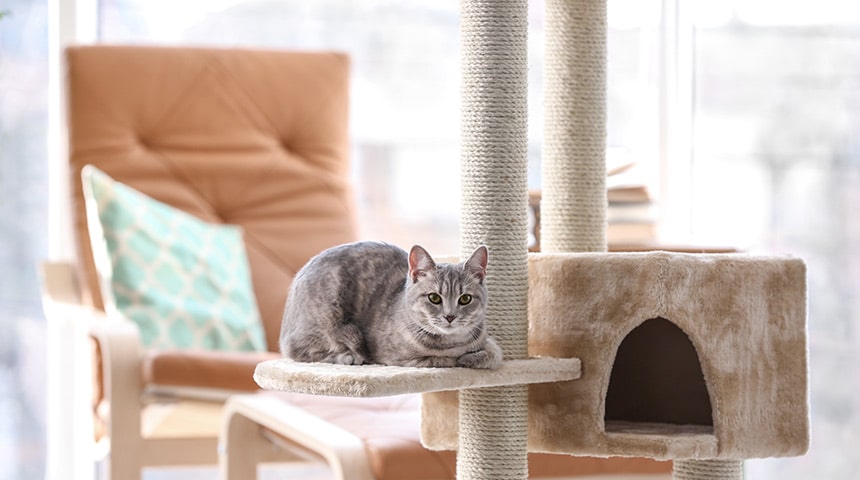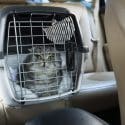This is a very common tool but seldomly used properly or to its maximum potential. You probably know that cats are very complex and difficult beings. You can buy them the most beautiful cushion, they will prefer the bag that the cushion came in... Same principle for scratching posts! You need to know which one to choose and how and where to use it to make sure your kitty uses it properly. There are different types of scratching posts to meet the needs and preferences of each cat.
Here are the 3 points to remember for optimum use of the scratching post.
Material and textures: You should definitely think about the fun and joy the scratching post will bring to your cat. Necessarily, the texture of the scratching post will have to suit your cat as well as being enjoyable for him. Just like humans, cats each have their different tastes, so we recommend to have your cat discover different textures, such as cardboard, strings or carpets.
Location: There is a logical reason why your cat picked certain pieces of furniture rather than others to « claw ». It is important to know that your cat marks his territory in different ways: including by rubbing his chin on a door frame or clawing on your couch. Marking is usually done in busy areas of his environment. Accordingly, your sofa that sits in a central location of your home or apartment, is an excellent place to define your cat's territory. With that in mind, you should put the new scratching post where your cat will want to use it. Unfortunately, the corner of a room, where several owners place the famous scratcher, is a place little frequented by cats. Although the post is not a very aesthetically pleasing item, it will still have to be placed strategically where your cat will want to claw and not where you would like your cat to use it.
Height and stability: It's well known that cats love to stretch. The post should therefore allow him to stretch out – a height of 36 inches should be enough to allow him to stretch properly. In addition, the scratching post must be stable. If your cat claws at it and the post moves and is unstable, he may not want to use it anymore. In nature, big cats use trees as scratching posts. So think about stabilizing the one used by your little feline. However, keep in mind that some cats will prefer a horizontal scratcher.
If your cat has already started to damage a place such as a sofa or a carpet, make that place as unpleasant as possible for your cat to be redirected to the scratching post. A little trick would be to install aluminum foil or plastic tarps, which will make the area less attractive to your cat. Once he does not want to go to this area anymore, just install the scratching post nearby and your cat should make the transition to his new territory! You can even put a little catnip on the post to entice him even more. If you have any questions or concerns about your cat's claws, do not hesitate to speak with a member of our team. We are here to guide you.





